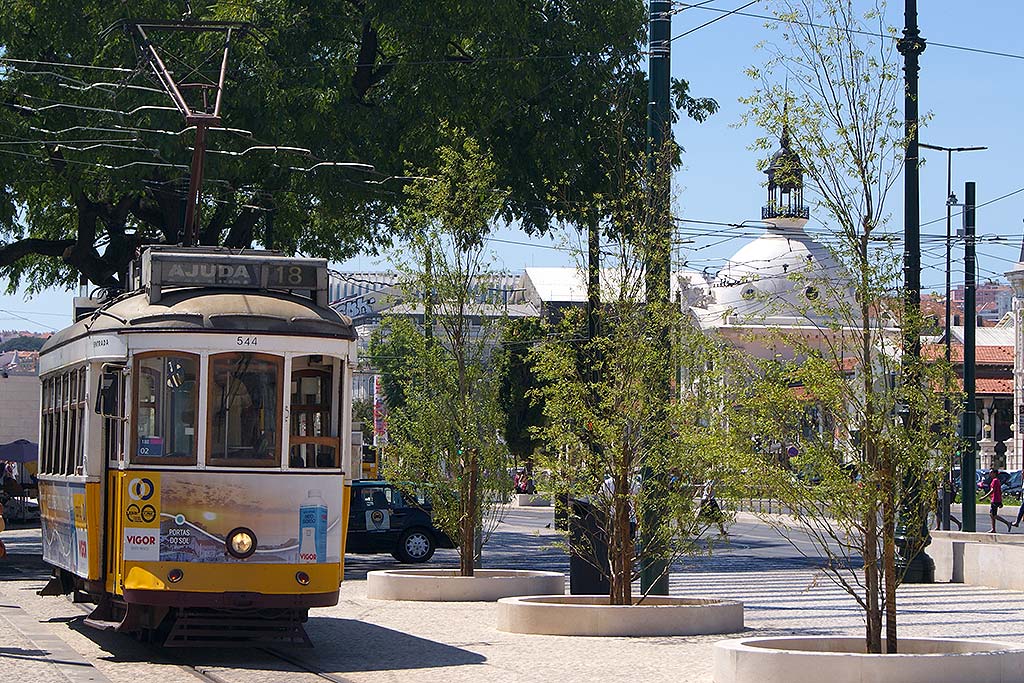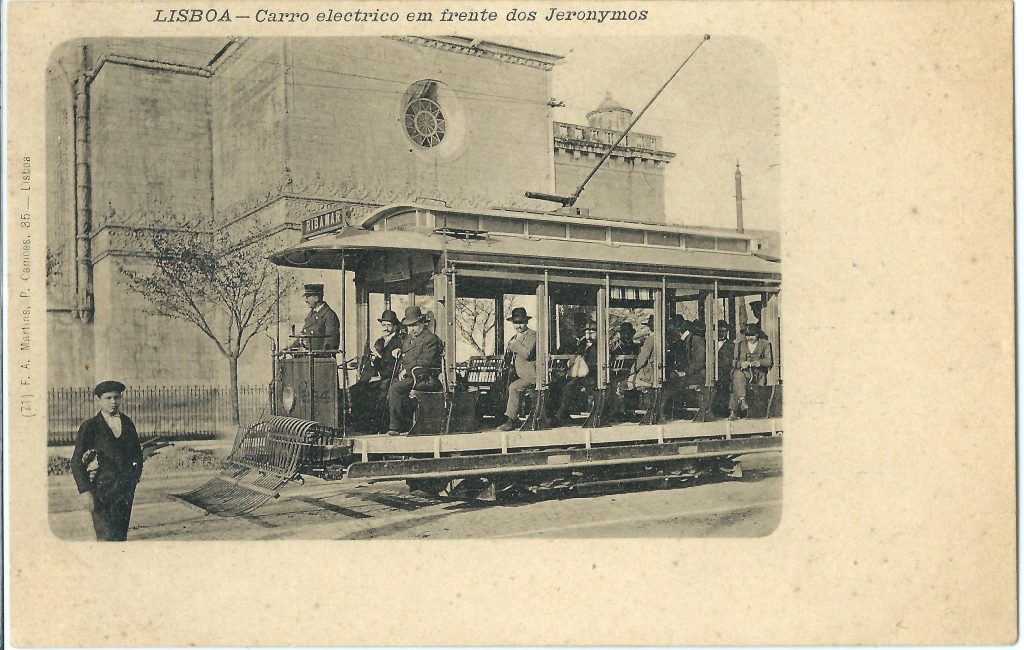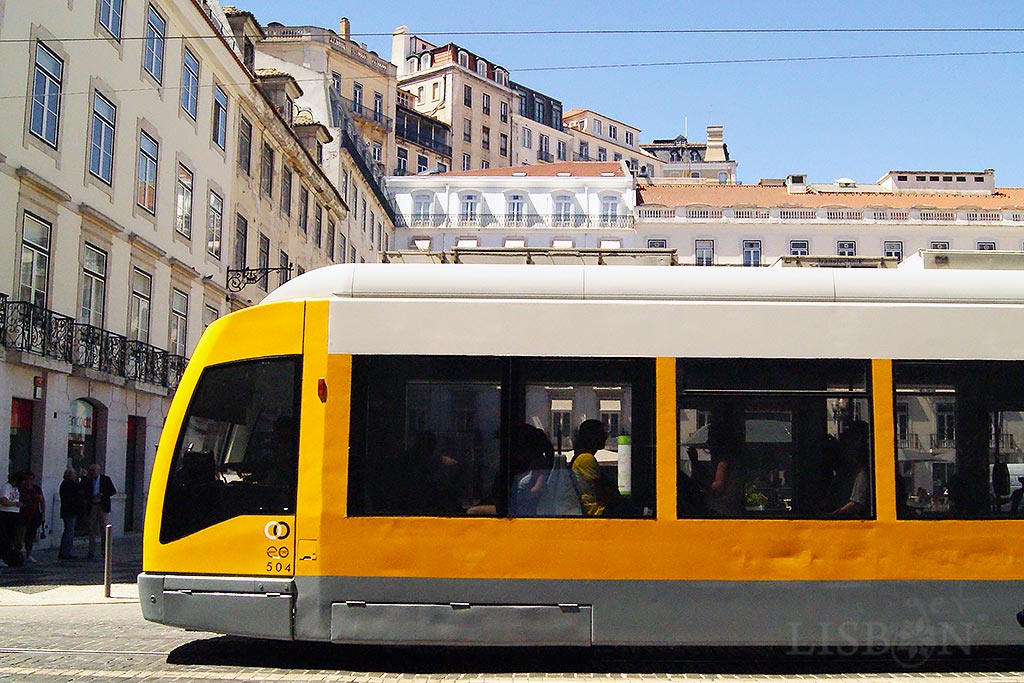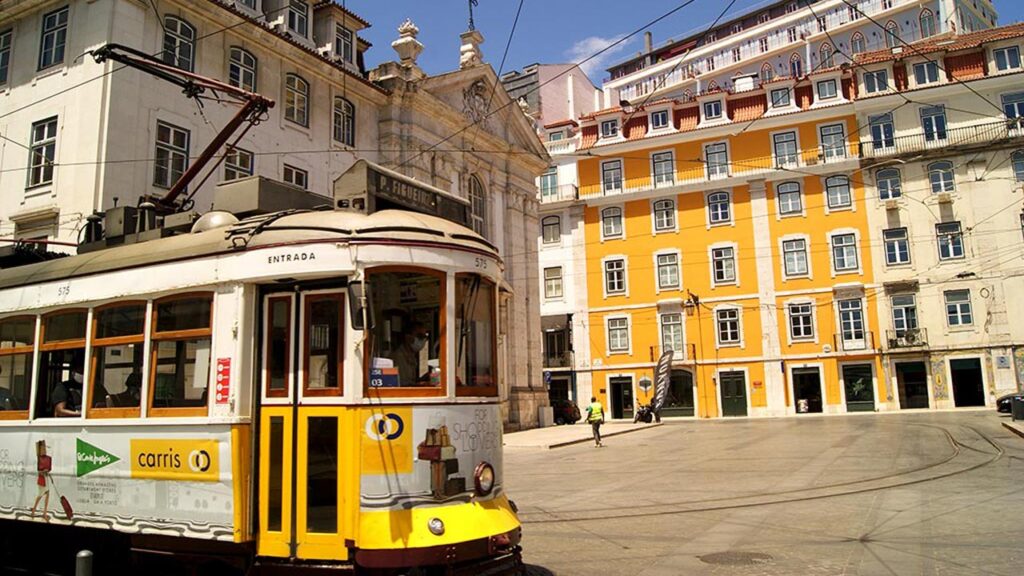The Lisbon trams that cross our city of the seven hills are one of the most represented and expressive elements.
These vehicles are undoubtedly an invaluable heritage and symbol of the imaginary of the locals of Lisbon and of those who visit us, along with the lifts and funiculars.
The emblematic route of the tram 28, starting in Martim Moniz Square and ending in Campo de Ourique by going through the historic neighbourhoods of Graça and Alfama, is without a doubt unmissable and the most popular.
If you want to experience this memorable route and even get to know the typical neighbourhood of Alfama, where fado was born, the Lisbon Tram No. 28 Ride & Walking Tour is an excellent option.
In The First Means of Transport of Lisbon, we revealed the origins of trams and their revolutionary roll in the expansion of the city. Today we’ll tell you how they evolved, how they almost disappeared and its role today.
The Rise of the Lisbon Trams

Criticism and Resistance
At 6am on August 31, 1901 the first Lisbon tram left Cais do Sodré with a destination to Ribamar-Algés.
But the road electrification works that occurred quickly and with no incidents throughout the year of 1900, were successively criticised.
The press accused Carris – Companhia Carris de Ferro de Lisboa (transportation company) of creating a means of transport that would be dangerous for the population of Lisbon.
People resisted to change and called attention to the potential loss of lives due to electrocution of pedestrians, to run overs or accidents caused by thunderstorms, and even to aesthetic issues.
However, after its inauguration all worries drifted away. The population very quickly surrendered to the effective means of transport that surprised everyone.


The First Lisbon Trams

Image courtesy by the collector Luís Bayó Veiga
The first Lisbon trams had an open coachwork with a roof supported on pillars between which there were striped canvas blinds. It was a surprising fact that these vehicles were bidirectional. The front and rear were identical, each one had an independent engine and control panel and the folding seats had a capacity for 32 passengers.
At the end of the same year it was inaugurated, the Lisbon Trams network had already extended to 24km and only within one year did this number change to 90.
In 1902 bigger carriages with double the seats were introduced for longer linear routes. There were even trailers that crossed the riverside of the Tagus river at high speed.
The smaller cars continued to cut across the hills and the old neighbourhoods of more difficult access.
In 1907 Carris already had 204 vehicles that in a fast, economical and regular way served the interests of the Lisbon locals of all social strata.
We suggest a visit to the Carris Museum where you can admire, among others, the only surviving example of the open trams.
Carris and the Funiculars

Thanks to a partnership between Carris and the funicular dealership it was possible to replace the funiculars that travelled great distances with trams.
It was the case of the Graça funicular that connected Rua da Palma to Rua São Tomé (dismantled in 1909) and of the Camões/Estrela funicular (dismantled in 1913). These routes had systematic issues and there were even derailments.
The São Julião Lift also stopped operating in 1915.
Today, these routes are integrated in the popular route of the tram no. 28.
When in 1926 Carris acquired the Company of Funiculars, all vehicles became part of its network of transport and were made uniform by being painted yellow, the colour of the trams that was kept until today.
Patrimony at Risk

Until the 30s the tram was a rising phenomenon, having its network reached 150km, extending to unoccupied areas that were now able to be developed by forming new neighbourhoods.
In 1940 Lisbon witnessed a big event that radically transformed the riverside of the Belém area, the Portuguese World Exhibition.
Predicting that the event would attract thousands of people and that the trams wouldn’t have capacity to meet demand, modern buses were introduced in order to complement the transport supply.
From then on new bus routes that had more mobility and were able to reach further without the infrastructure investment that trams require, started existing.
The buses, green-coloured at the time, started first complementing and later competing with the trams. Curiously, these vehicles were even changed to orange, but in 1997 they were coloured with the same yellow as the trams for the commemoration of 125 years of Carris.
The introduction of the metropolitan in 1959 and the growth of private automobiles in the 60s put the Lisbon trams on the back burner and many routes were removed. This once revolutionary transport was even accused of stalling traffic when it was often immobilized due to poorly parked cars of uncivilised drivers.
Cars have taken the place not only of trams but also of people, sidewalks and the most emblematic squares in Lisbon, such as Comércio, Rossio and Restauradores squares that have become unsightly car parks.
New and Old Lisbon Trams

Throughout the 20th century the Lisbon trams suffered changes in their appearance: their coachworks stopped being open and became rounder; the emblematic middle headlight was replaced by two; automatic doors were added…
But no change was as radical as the introduction in the 90s of the modern articulated trams that cross the marginal, our coastal road. Its modern appearance, equipped with air conditioning and frosted glass that separate the passengers from the street isn’t the most appealing. Its added value is the efficiency with which it crosses long routes in a short period of time. In truth it looks more like a surface metro than a traditional tram.
The following models were replaced through time but the current trams have the same model as the elegant one of the 30s.
However, you don’t have to pull the leather cable to ring the stop bell anymore (still present in the tourist trams), the driver’s cabin is no longer separated from the passengers with two elegant sliding doors, the seats are no longer caned seats…
The ticket inspector disappeared! The emblematic figure with a crossbody leather bag and metal pliers with which he used to hole the tickets and to hit the pole to warn the tram driver that they could restart their ride.
A series of sounds that were part of a tram ride and that were lost through time.
| Never miss another article | Subscribe here |
An Icon of Lisbon

The management of Carris is sinde 2017 ensured by the City Council of Lisbon who is fortunately betting on trams again. A less polluent means of transport filled with charm and tradition and with no circulation problems in a more organised city.
This policy is present in the reactivation of the route 24 that now connects the Camões Square to Campolide and that moved many locals who used to travel on this route daily.
In addition to the functional routes, Lisbon also has trams especially destined to tourist routes. You can tell them apart easily because instead of being yellow they’re red. One of them is green and has the particularity of being covered in cork.
The Lisbon trams are undoubtedly an icon, a part of the heritage and imaginary of this city, being not only a tourist attraction, but also an object of true affective importance to its population.
Curious Fact
The popular expression “Ir a Nove” (directly translated to going at nine) means moving really fast, in 9th gear, the equivalent to the maximum speed of a tram.

The project getLISBON has been very rewarding and we want to continue revealing the singularities of fascinating Lisbon.
Help us keep this project alive!
By using these links to make your reservations you’ll be supporting us. With no extra costs!
• Looking for a different experience? We can create a customised itinerary based on your interests. Contact us!
• Or if you prefer tours and other activities in various destinations, take a look at GetYourGuide.
• Save time and money with a flexible Lisbon Card!




